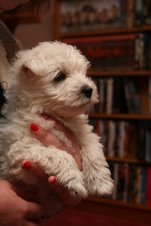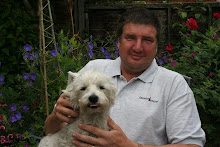Here, then, is the post that plenty of our friends and fellow small-holders will have been expecting since February when we revealed that we were "getting ducks". Followers of the blog will recall that I had always been dead against ducks because of the damage they do, particularly to ponds. All manner of other species came and stayed or came and went, even including geese who were easy to keep off the main pond and were supplied with 3 alternative water-bodies in which to bathe and play. Ducks, though were always beyond the pale. Ducks would reduce our lovely pond to a stagnant, shit-loaded, lifeless mess with brown 'muddy-desert' margins.
 |
Pond plants left broken and floating - the
well known downside of having ducks |
The duckless pond established and then flourished with a rich mixture of plants and some good pads of waterlilies developing. It was a-buzz with damsel flies, water beetles, dragon flies, water boatmen, pond skaters, whirligig beetles and we had a good number of smooth newts. Some visitors asked why we didn't have a few fish (gold fish, Koi Carp or the local favourite 'roaches') in there but we always fended them off with the insect larvae and tadpoles arguments.
 |
Cattle-race side gate shored up with mesh
and woodwork. |
Regular readers will know that we 'cracked' back in February. We decided that such a well established pond would have enough 'ecology' going on to be able to stay in balance with just a few ducks... perhaps 3, a drake and 2 ducks. That way we could let them breed and enjoy the sight of Mumma duck leading her little crocodile of yellow fluff-balls out onto the water. There was even a little duck house on the bank in the plan somewhere.
 |
A run under construction for the Hubbard poults to keep them
out of the yard and sheds. |
We nipped out to the local poultry sale in March looking for a pair of Muscovies and came away, instead, with half a dozen Khaki Campbell eggs for the incubator. 6 hatched in early April and delighted us through the fluffy stages. They even convinced us for a while that, now fully feathered, they would still avoid the pond and preferred their little paddling pool.
 |
Having another go at the Feta cheese - this time with moulds
(yogurt pot with bottom cut out) lined with cheesecloth "socks". |
Well, if that was the honeymoon period, then it must be almost at its end and the true nature of this 'marriage' is taking shape. They are now 3 months old and no longer ducklings, but full size, chunky ducks (all be it not sexually mature yet, so none of the curly tail feathers on the drakes' rumps.) We have watched them with increasing alarm and decreasing conviction that we might get away with the duck thing, that they hadn't eaten ALL the plants, or damaged the edges and we were definitely not stagnant.
 |
Cubing up the Feta 'rounds'. The cubes now get 4 days
of being sprinkled with salt and dry curing. |
They
have though, pretty much eaten all the floating plants (water lilies, floating pondweeds, hornwort) plus the tops of all the emergents except bog-bean. They have dabbled up all the oxygenators which were rooted into the light sediment (there is a rubber liner) leaving them shredded and floating in a tangled mess. We also seem to have no more beetles or boatmen, damsels or dragon flies and we have not seen newts lately.
 |
| Good firm Feta cubes dry-curing (in the fridge) |
We jointly decided that this was not working right and that we would keep the ducks but try to keep them off the big pond. Friends advised that they should be perfectly OK in with the geese - they would quickly learn to steer clear of the gosling, the Mother goose and George the Gander. I have now started to confine them into the orchard and the "old dung heap bit" and am having an interesting time with one particular bird who has a talent for escaping. I
think my sheep wire and hurdles are duck-proof (they do seem to be for 5 of the ducks!) and I have shored up a few leaks in gates and fencing found by the Houdini-Duck. They have been satisfyingly NOT ON THE POND today anyway - even Houdini doesn't go onto the pond if he's alone. We will have to watch the pond with interest to see how it recovers.
 |
| Larch |
On a related subject, I am creating a run this year for the Hubbard poults. These guys have always been fully free range before but their winning growth rates are a result of eating MOUNTAINS of food which, being chickens, they convert into meat but also a fair quantity of... um.... "guano". They are friendly (or mercenary) souls and tend to hang around lazily in the yard waiting for the next feed, and taking shelter from rain in our good sheds. Not for them the extensive grass ranging or a scratch of the woodland floor.

You can probably guess where I am going with this - all that guano tends to end up in the 'human areas' (yard, feed-sheds) and we get fed up with wading through it or slipping on it as we move about, not to mention how much can get walked into the house. The down side of full free-range? So, this year, now that they are approaching Day 50, they are getting moved to the baby-forest (also overgrown dock and thistle patch) behind our Darby and Joan chairs beyond the big pond. We have no problem with them clearing that to a brown desert - it could use it and they will not damage the young trees.
 |
| The kittens explore the "foothills" of Mount Matt. Pic by Liz |
Finally, we have been enjoying a 'take 2' on the cheese making. We have learnt from the last Feta batch and this time we bodged up some moulds and Liz created cheese-cloth 'socks' with which to line them. I also cut the curds in the saucepan stage much smaller (cm cubes instead of 2 cm). You can see from the pics that these changes have all made the finished cheese 'rounds' much firmer and they taste and feel very genuine. The rounds now cubed up again get sprinkled with salt and gently dry-cured for 4 days before they get packed in brine (where they should last 3 months in the fridge). It is all looking a bit good!












No comments:
Post a Comment